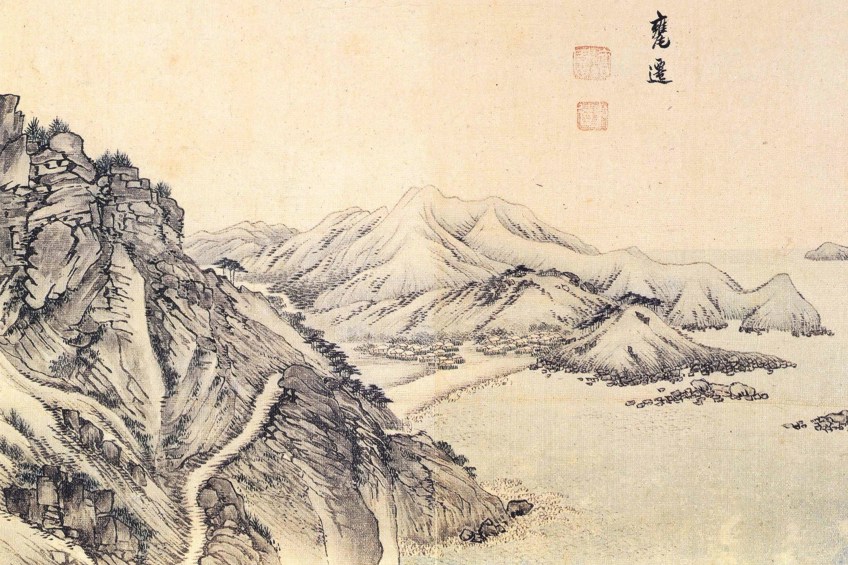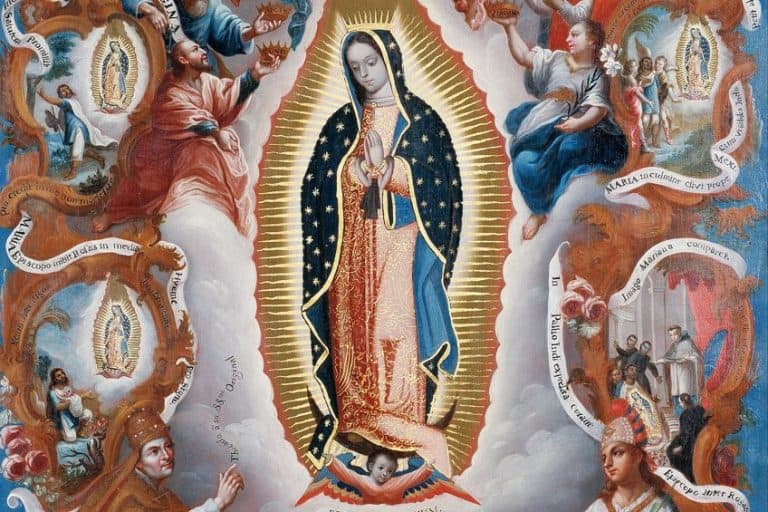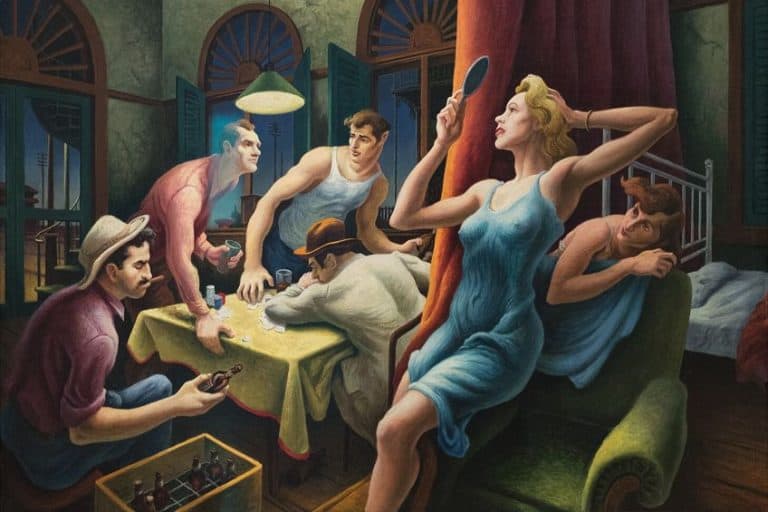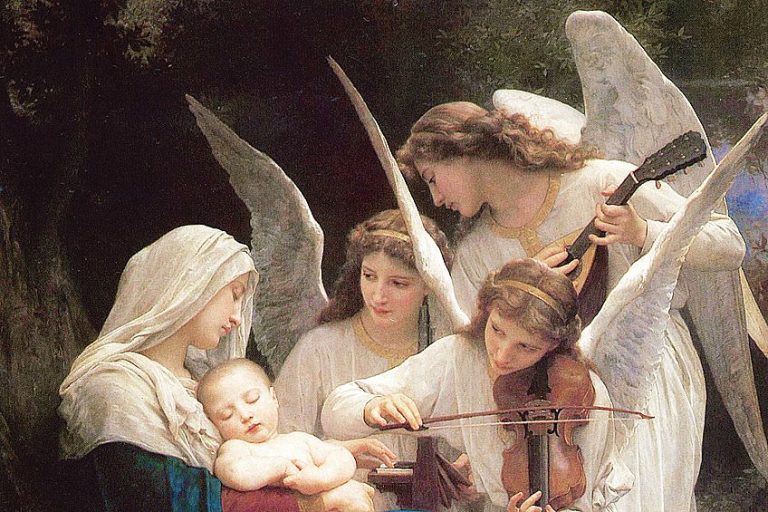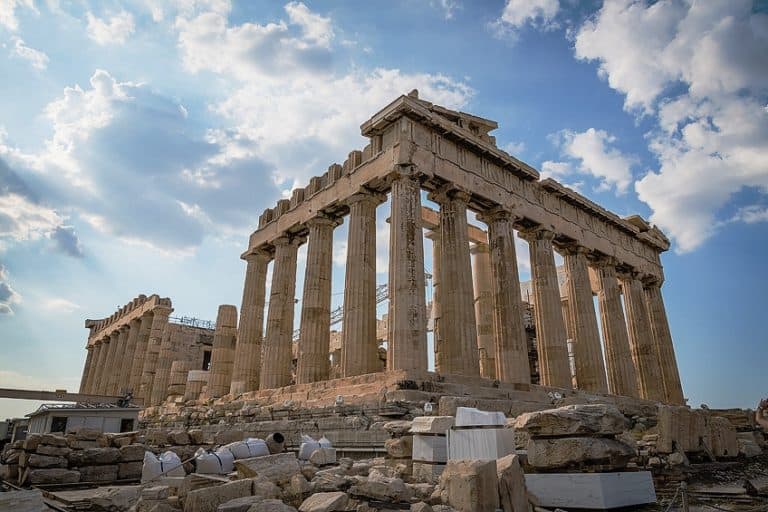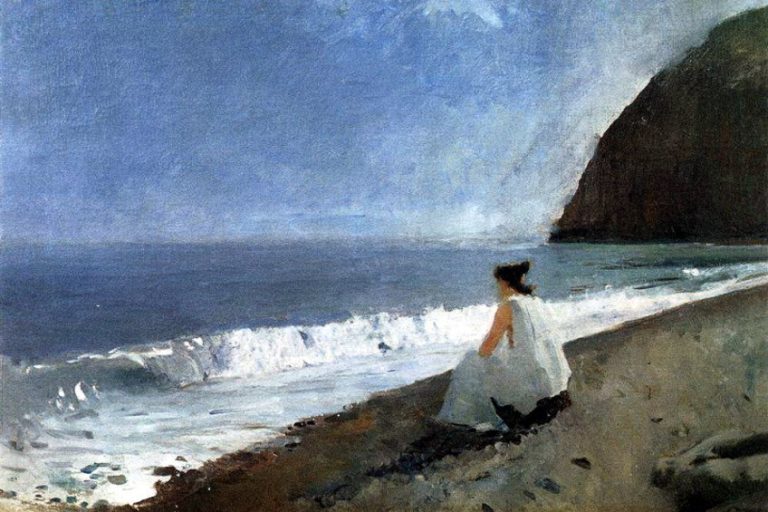Korean Art – Exploring Both Traditional and Modern Korean Art
The origins of Korean art can be traced back into the distant past of the Stone Age, with artifacts dating as far back as 3000 BC. Much of the traditional Korean art was heavily influenced by the aesthetics of the surrounding eastern cultures, such as art from Japan and China. However, over centuries Korean art gained its unique identity and distinctive characteristics.
Table of Contents
Characteristics of Korean Art
Korean art has developed many traditional mediums such as pottery, calligraphy, and painting, with a focus being put on decorating surfaces with natural forms. Japanese and Chinese art had a huge influence on the Korean aesthetic, with Korean artists borrowing certain recognizable techniques and motifs from their designs.
Centuries of the Korean preference for simplicity led to a lessening of extremes regarding lines, and the usually rigid straight lines or overtly curving lines of the other eastern art traditions were modestly represented in the Korean counterparts.
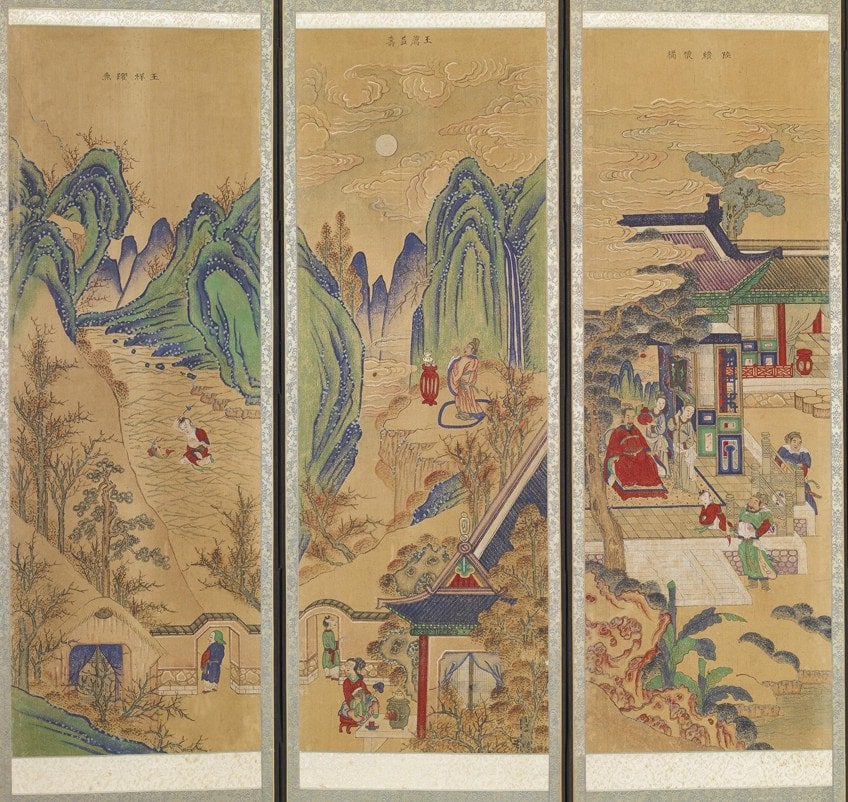
Korean art is connected to the concept of naturalism, and characterized by its non-complex and harmonious composition, displaying a deep connection with the artist’s natural surroundings. The idea of naturalism was to try to portray nature as true to life as possible, without the interference of the distortion created by the subjective human mind.
This led to a preference for using unadorned surfaces in the wood engraving techniques of Korean sculptors and Korean potters, who would strive to amplify the natural textures and contours of the medium, instead of working against it. This style is characterized by the avoidance of techniques that employ extreme angles, sharp lines, and bold outlines.
Korean art is typified by its gentle and natural content, fluent lines, and a feeling of harmony, balance, and peace.
History of Korean Art
As art historians have noted, the Chinese influence was prominent in the early development of Korean art history, yet acknowledge that over many years, the Koreans began to refine their technique into something unique to their own culture, creating styles that assimilated the techniques and motifs of their eastern neighbors, yet toning down the use of extreme angels or excessively bold lines.
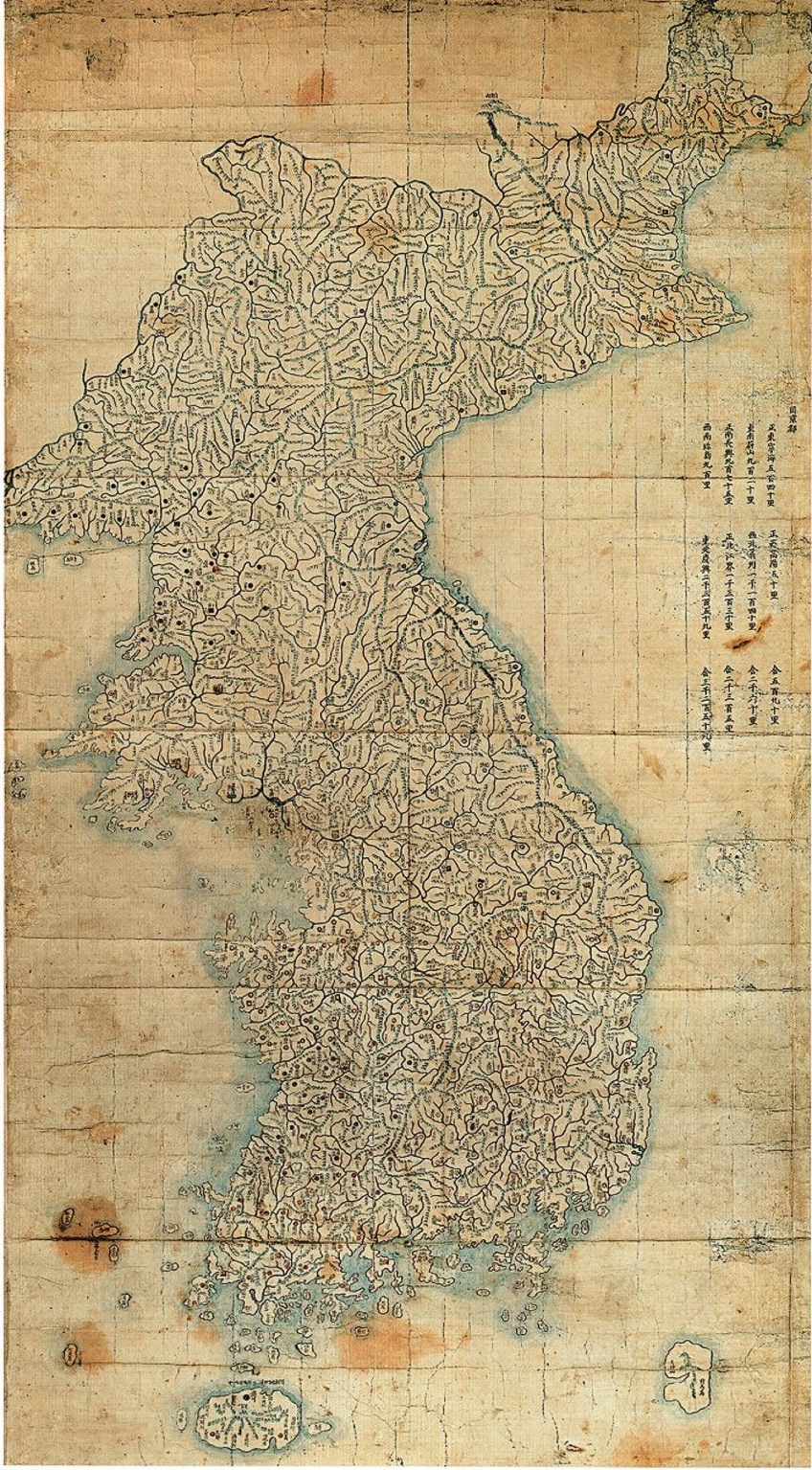
Based on the evidence collected from archeological sites, Korea was originally populated by people that had traveled via Manchuria from Siberia sometime during the latter period of the Stone Age. Many pieces of artifacts found during archeological excavations have been dated as far back as the Paleolithic period, approximately 10 000 BC.
Let us take a deeper look into the history of Korean art.
Neolithic Era
The Korean Peninsula has been occupied since approximately 50 000 BC when humans migrated there from Serbia. The earliest examples of pottery found have been dated by archeologists as being from around the period 7000 BC. These flat bottomed vessels were made from clay that had been fired over open pits, bearing the designs of horizontal lines and relief impressions.
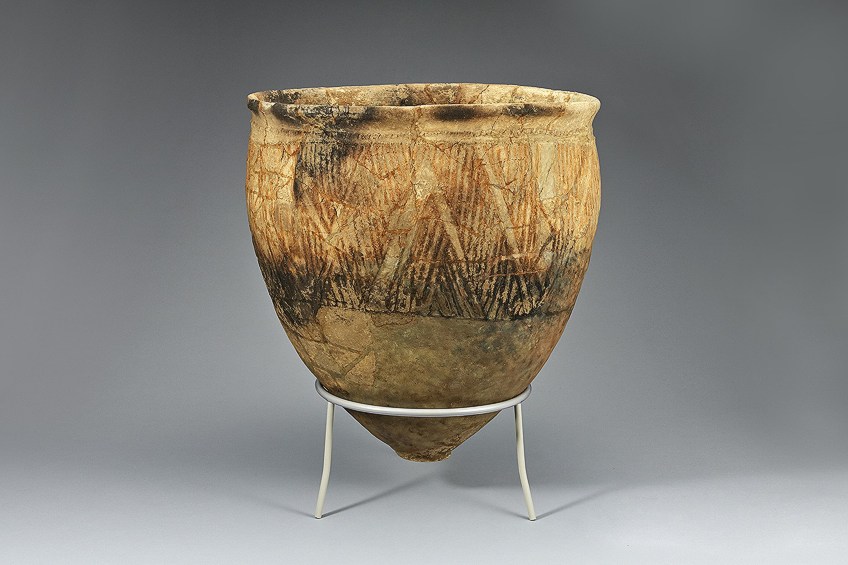
The early influence from Siberia can be seen by the Jeulmun style pottery that surfaced approximately 6000 BC. These had been decorated with a comb pattern, typical of the style and period. Sometime during 2000 BC, the large vessels used for storage and cooking were made, known as Mumun pottery. However, unlike other examples of pottery from Korean art history, these were largely undecorated.
Iron Age
This age is marked by the adoption of the iron casting techniques of the Chinese, most likely introduced during the 5th and 4th centuries BC through contact with Yan, a state of North-East China. It was common for Koreans to simulate techniques and technology from their eastern counterparts and turn it into something uniquely Korean, not only matching but sometimes even exceeding the processes learned from other cultures.
The introduction of this casting technology from China marks the beginning of the Korean Iron Age.
Three Kingdoms Period (c.57 BCE – 668 CE)
During this period, the peninsula of Korea was ruled over by three separate monarchies, this is why it is referred to as the Three Kingdoms Period. The various kingdoms were known as Goguryeo, Baekje, and Silla.
Goguryeo
In 372 CE, Buddhism was introduced to Goguryeo, a kingdom that encompassed southern and central Manchuria, as well as parts of modern-day Korea. It was during this time of Buddhist influence that members of the royal ruling class began to commission art dedicated to Buddhism. Goguryeo art is exemplified by vividly decorated murals on the ancient Korean tombs, which portrayed everyday scenes of life in the ancient kingdom.
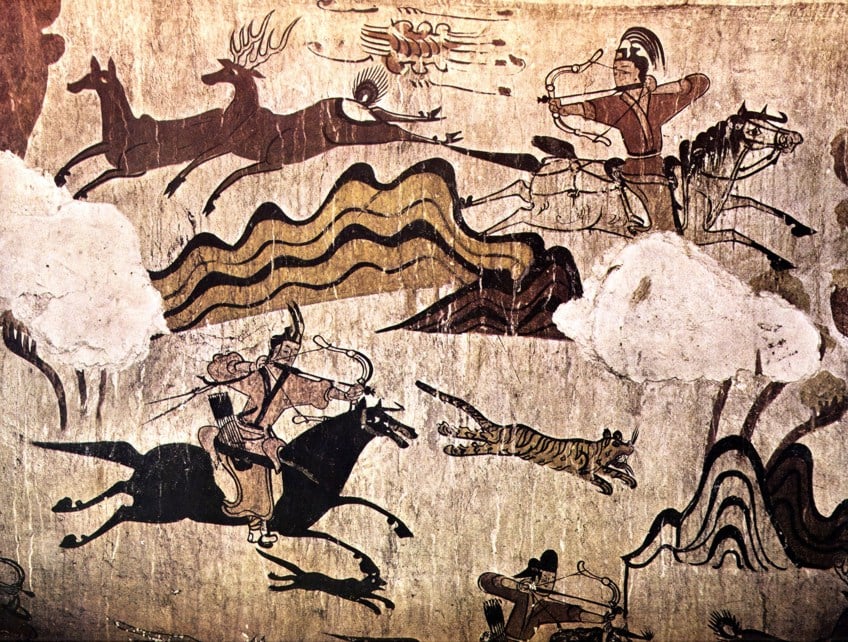
Baekje
The greatest Korean traditional art of the time is said to come from the Baekje Kingdom. The Baekje culture took great influence from the southern Chinese dynasties, and also in turn influenced other neighboring dynasties such as the Japanese. Baekje sculptures were religious in context, often depicting Buddha, but in typical Korean style which is typified by its warmth and harmonious proportions.
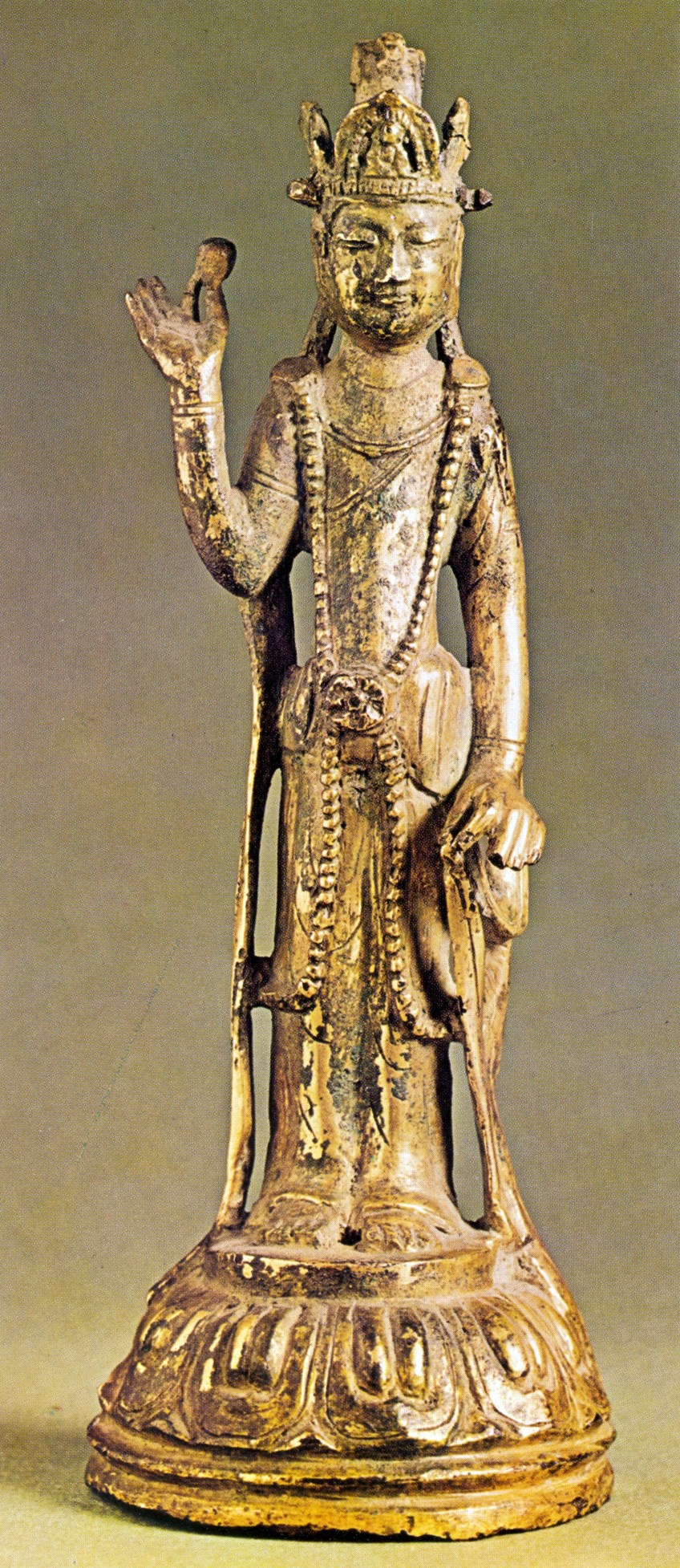
Silla
Many Korean crafts that have been excavated have come from this kingdom, as geographically it was rather isolated and so the tombs remain relatively undisturbed. Situated in the most southeastern section of Korea, it was the final kingdom to eventually feel the influence of outside cultures, and also the last to adopt Buddhism as the region’s chosen religion.
The craftsmen of this region are most renowned for their gold-crafting skills, such as crowns and gold jewelry, which share a close resemblance to techniques found in Europe, leading some historians to believe that this region was part of the Silk Route.
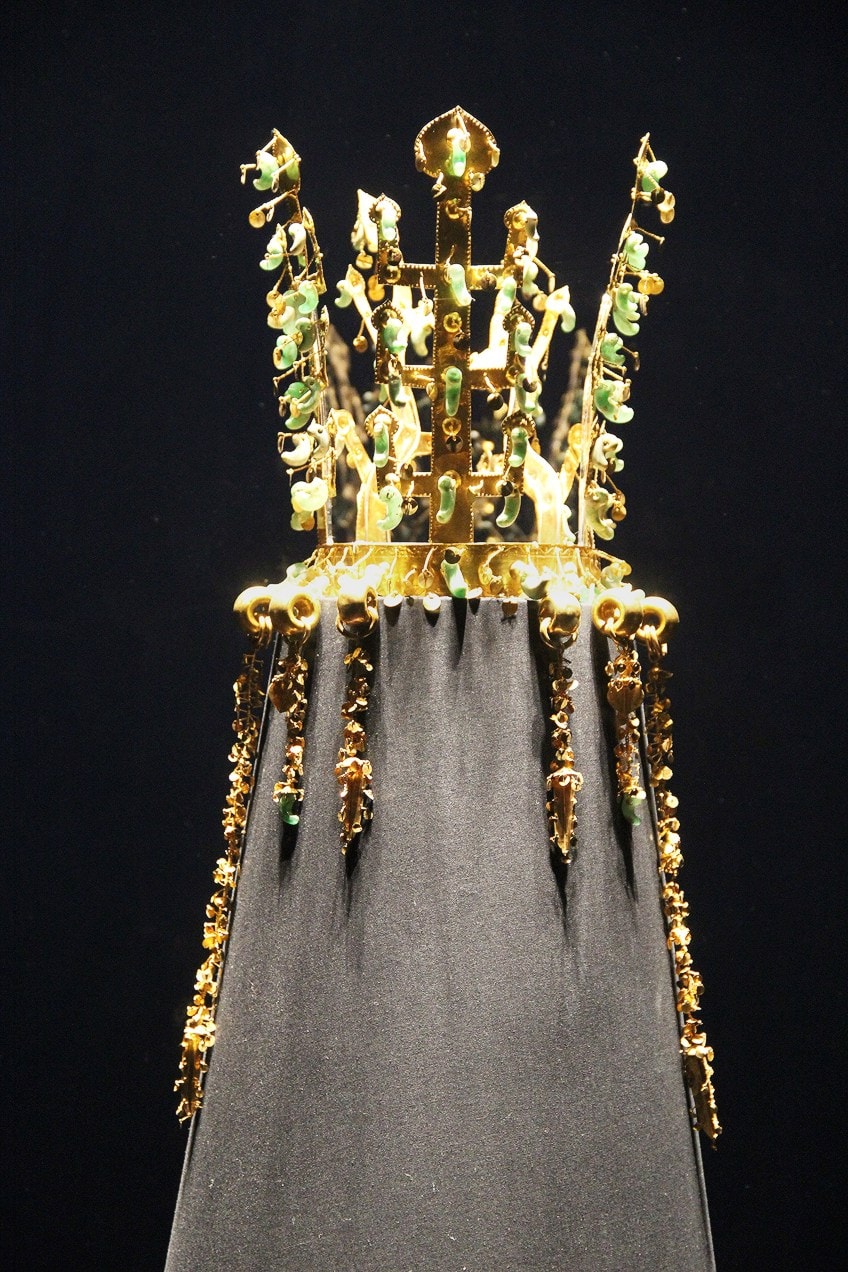
North-South States
This period refers to a time in Korean art history when the kingdoms of Silla and Balhae coexisted simultaneously in the southern and northern regions of Korea in the years between 698 and 926 CE. Unified Silla was a notable period of production for Korean traditional art, especially regarding Buddhist art. Two works that exemplify this period are the Bulguska Temple and the Seokguram grotto.
Balhae art depicted scenes more associated with daily life, with images of men at battle, musicians playing instruments, and aristocrats.
Goryeo Dynasty
This period lasted from 918 CE until 1392 and is most famously known for its celadon pottery. This style originated from China, yet Korean artists elevated the craft to a higher level, in turn leading the Chinese themselves to refer to Korean crafts and pottery as “the first under heaven.” By reducing the amount of oxygen in the kiln, a green-blue hue is created, a glaze finish known as “kingfisher color.” This pottery depicted fish, fruit, and mythical creatures in a free-flow style.
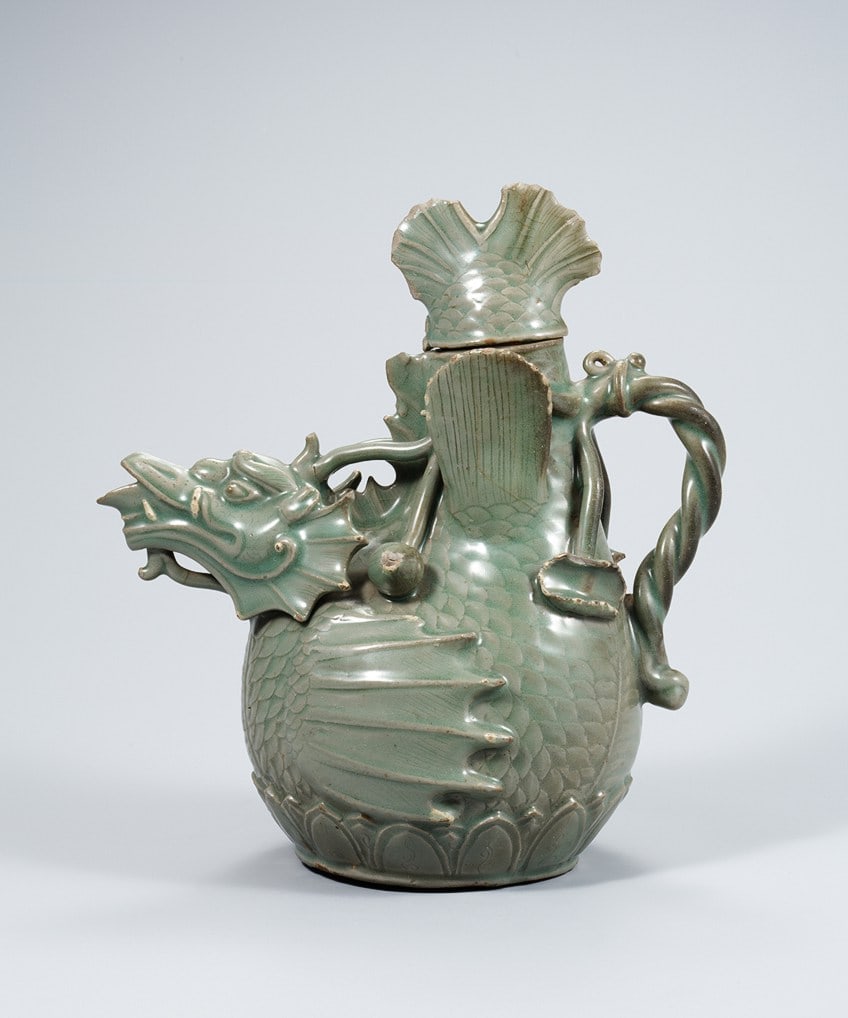
Joseon Dynasty
During this dynasty, many Buddhist elements remained visible in popular Korean painting, but with the incoming influence of Confucianism, the traditional centers of art started to dismiss works depicting Buddha and moved towards increased realism. The previous art of the region had been stylized, but the new art which had been dubbed “true view” showed a marked turn from the less detailed landscapes and objects rendered in traditional Korean painting towards a new style of depicting landscapes exactly as they were.
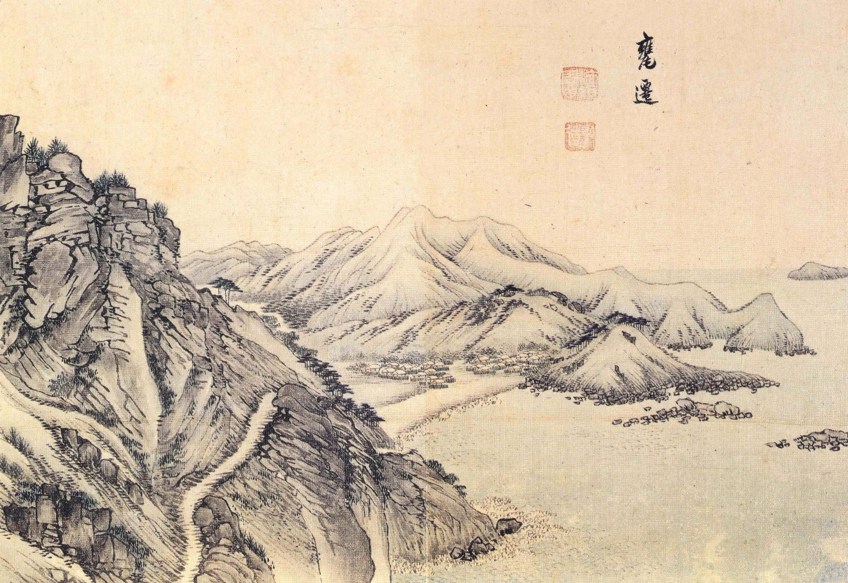
Modern Korean Art
During the Japanese invasion in the 1880s, Korean art suffered a huge blow when the institutes of art education were shut down, famous works were destroyed or stolen, and Japanese subjects and styles replaced traditional Korean art.
Since regaining its freedom from Japan in 1945, modern Korean art began to emerge out of the former imposition of Japanese styles and helped Korean artists regain their identity and unique forms of cultural expression.
A limited resurgence has been seen in the use of Korean crafts that make use of materials such as bamboo, jade, metal, and textiles. Modern Korean art paintings require some understanding of the styles employed in Korean crafts such as ceramic pottery to fully appreciate the aesthetic that Korean artists are trying to replicate.
Forms of Korean Art
Korean art can be grouped into several categories defined by the use of various mediums and techniques, from Korean painting to other Korean crafts, such as ceramics and sculpture to calligraphy and architecture. Here are some of the notable forms of art to come out of Korea.
Calligraphy and Print
Calligraphy is considered high art in Korea, each brushstroke revealing something of the character and personality of the artist himself, thus amplifying the subject being painted. Handmade paper is used in Korea for a range of practical and artistic uses. Architecturally, it is used for floor covering and window screening.
As an art medium, it is used in various forms such as printing, paper figures, and even paper clothing.
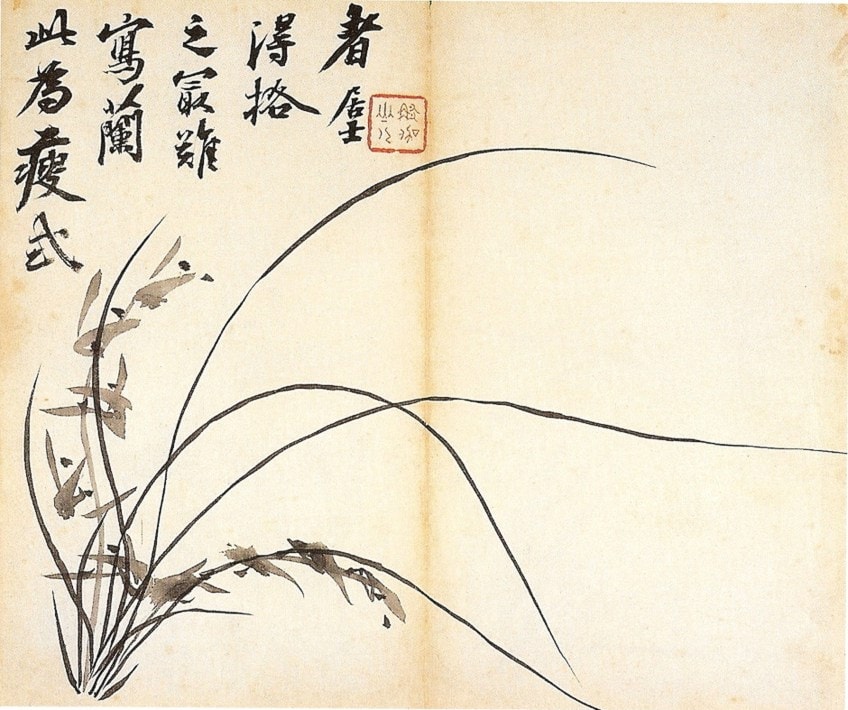
For the majority of the 20th century in Korea, the most prominent artistic medium was painting, with abstraction being of specific interest to Korean artists in the 1930s. In the mid-1960s, a few artists started to challenge the status quo of what was expected from ink painters when they began to abuse the materials and manipulate them in strange ways by soaking canvases, pushing the paint around, ripping paper, and dragging pencils through the art, such as artist Kwon Young-Woo.
Ceramics and Sculpture
The most famous and oldest art in Korean art history is Korean pottery. It is connected to Korean ceramics such as massive murals, tile work, and elements of architecture. Much of the early ceramic techniques and styles were adopted from the Chinese culture.
Korean ceramics became highly revered in Japan, considered the most famous Korean art for the Japanese. The chambered kilns used by the Koreans were highly effective in helping to forge the high-quality local materials into finished products that were eventually exported to Japan.
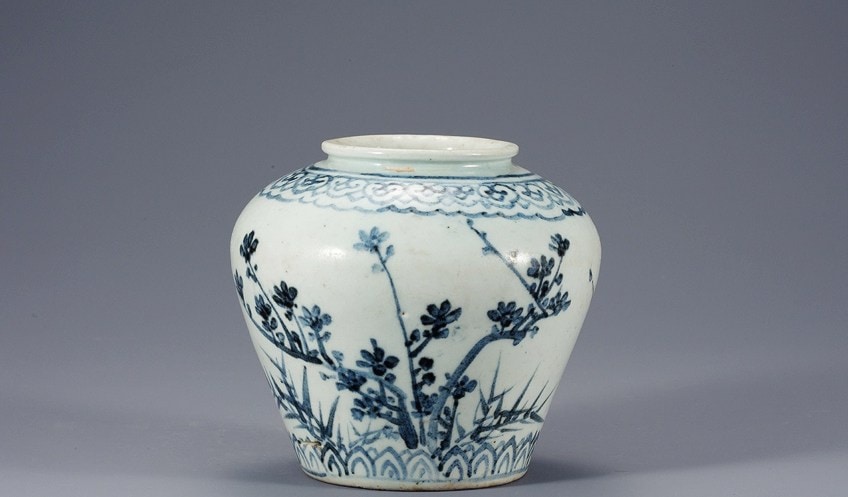
Famous Korean Artists
Besides the older artists involved in traditional Korean art, some contemporary artists have left their mark on modern Korean art and South Korean art. Famous Korean artists from 20th Century Korea include Nam June Paik, Park Su-Guen, and Chang Ucchin. Notable Korean artists from the 21st Century include David Choe, Amy Sol, and Tschoon Su Kim.
Let’s take a look at some famous Korean artists and the works that made them famous.
Jeong Seon (1676 – 1759)
Jeong Seon, also known as Kyomjae, was a traditional Korean artist famous for his landscape paintings. Jeong’s work included mediums such as ink as well as Oriental-style water paintings. His style was not abstract but bore some resemblance to reality, his landscape paintings being created in the “true-view” style popular at the time.
His paintings of Korean landscapes and life have made him one of the most famous in Korean traditional art.
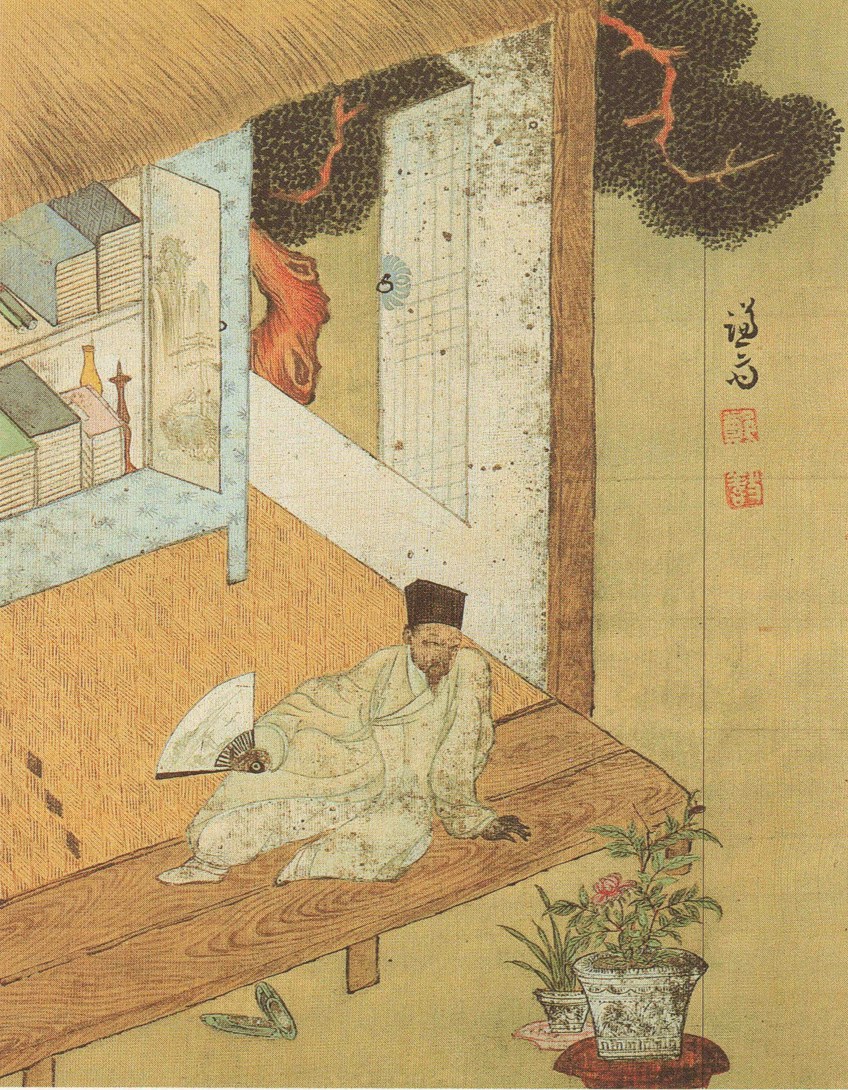
Jeong Seon was born on the 16th of February, 1676 in Seoul. He was born to a poor family, and although they recognized his artistic talents at a very early age, they could do little to support his desire to become a painter.
He painted mostly for leisure at this time, occasionally making landscape paintings for the rare client, until he was introduced to a neighbor that recommended him to the Joseon Bureau of Paintings, where he then took up a position as a painter.
In 1711, he traveled to Mount Geumgang and created Pungak Mountian, Sin-Myo Year, an album consisting of 13 paintings. The following year, he returned and painted Realistic Representations of Sea and Mountains, an album consisting of 30 paintings. Jeong is considered one of the most eminent painters of his era and many other Korean artists were inspired to emulate his techniques and style.
Park Su-Geun (1914 – 1965)
Park Su-Geun was born in Yanggu County in South Korea on the 21st of February, 1914. As a teenager, Su-Geun taught himself how to paint in the style of Korean traditional art, following his studies at Yanggu Elementary School. He first launched his public career in Korean painting in 1932, when his work Spring is Gone was chosen to be displayed at the 11th annual painting contest held in Seonjeon. He was chosen eight more times to exhibit in the competition until 1944.
In 1953, he won first place in the annual National Art Exhibition, and shortly after, he took up painting full-time and went on to win a further ten competitions. He would go on to be chosen to serve on the screening committee in the following decade.
Park Su-Geun is best known for his use of Korean-based folklore themes and worked predominately in grayscale. Due to a cataract in 1963, Su-Geun lost partial sight, and in 1965, at 52 years of age, he died due to liver disease. He spent most of his life in abject poverty but was awarded the Silver Crown of Order of Culture Merit after his death. His works can posthumously be viewed at Museums such as the USC Pacific Asia Museum as well as the University of Michigan Museum of Art.
Chang Ucchin (1917 – 1990)
Chang Ucchin was born on the 26th November 1917 in Korea at a time when it was still ruled by the Japanese. He studied at Tokyo’s Imperial School of Art, where his focus was on western art styles. After his time as a professor of fine arts from 1954 to 1960, Ucchin left Seoul National University to concentrate on painting full time. Ucchin represents the modern fine art movement in Korea.
The subjects of his paintings include images of the moon and the sun, birds, children, and other things familiar to the Korean way of life, but painted in his unique techniques.
These techniques were developed through experimentation, inspired by the modernist trends of western cultures. Many of his works were oil paintings, but he also experimented with other mediums such as Chinese ink painting, drawing with marker pens, pottery painting, silkscreen, wood-block, and copperplate printing techniques.
His work exudes a child-like innocence, viewing subject matter and the surrounding world through clear and unjaded eyes. Buddhist themes were common in his work, as well as images of his neighbors and the scenes he saw around him in daily life. Examples of his works containing this simplistic child-like style include Two Families (1979), Wife (1979), Family (1979), and Three (1973).
Kim Tschang-Yeul (1929 – 2021)
Kim Tschang-Yuel was born in Maengsan, Korea, on the 24th of December 1929. After serving in the Korean War, he studied at Seoul University’s College of Fine Arts in the mid-1950s. In 1966 he moved to New York to attend the Art Students League for a couple of years and then relocated to Paris. This constant exposure to new artistic movements and schools of thought while traveling, led to Kim experimenting with liquid forms.
This fascination with liquid forms eventually led to Kim being recognized as a prominent contemporary Korean artist for his famous style of painting water droplets.
The origins of the water motif can be traced back to the traditions of Eastern philosophy. For Kim, the subject acted as a kind of therapy for his past traumatic experiences serving in the war, as well as a contemplation of infinity. For Kim, each drop, being so naturally impeccable, represents a continuous repetition of nothingness, ending in the same state it started as.
As a tribute to Kim’s lifelong contribution to art in Korea, the Kim Tschang-Yeul Museum of Art was opened in Jeju, South Korea in 2016. He now resides and works between two different cities, Paris in France, and Seoul in South Korea. Examples of his work can be found exhibited to the public in institutions such as the Hirshhorn Museum and Sculpture Garden in Washington, and the National Museum of Modern Art in Tokyo, among many others. Famous works by the artist include Recurrence (2007), Waterdrops and Calligraphy (1995), and Untitled (1970).
Nam June Paik (1932 – 2006)
Nam June Paik is known around the world as the “Father of Video Art” and is responsible for creating a massive body of artwork ranging from work with television and videotapes to performance installations and video and video sculptures. Paik’s artwork has inspired new generations of modern Korean art with his visionary art and innovative ideas and had an influence that reached around the globe.
His work stands out as being very different from traditional Korean art and a prime example of the new generation of South Korea Art.
Paik attended the University of Tokyo, graduating there in 1956. Although born in Seoul in 1932, his family fled Korea during the Korean war in 1950. After leaving university he traveled to Germany to further pursue his passions of avant-garde music, performance, and composition. He joined the neo-dada Fluxus movement after meeting George Maciunas and John Cage. Nam held his solo exhibition in 1963 at the Galerie Parnass in Wuppertal, featuring altered content transmitted through a series of television sets.
Paik immigrated to New York in 1964, expanding his experiments with television and video.
In 1969, he collaborated with an engineer from Japan, Shuya Abe, to construct a prototype video-synthesizer that allowed Nam June to layer and manipulate various images from a variety of input sources. This hybrid synth was dubbed the “Paik-Abe Video Synthesizer” and it changed the face of electronic image manipulation. With these tools, Paik had created a new medium of artistic expression and went on to create well-known artworks such as the seminal work Global Groove (1973), to his sculptures such as TV Buddha (1974)
Lee Ufan (1936 – Present)
Lee Ufan was born in Haman County, Korea in 1936. He is a minimalist sculptor and painter, and his contributions to the development of contemporary art have been recognized and honored by the government of Japan. Lee was also a philosopher and a prominent theorist of the Mono-ha philosophy. An appreciation of the intrinsic nature of objects is an Eastern artistic philosophy that can be identified as a source of inspiration for his work.
Lee was part of the first Korean art movement of the late 1900s to be promoted in Japan, a style known as “Korean Monotone Ar”.
Ufan felt that the postwar society of Japan in the 1960s was too heavily reliant on influences from the west, specifically Europe, and advocated the de-westernization of Korean society as an antidote, through both philosophy and art. As a proponent of the Mono-Ha movement, his work focused on the connection between materials, as well as the perceptions thereof, rather than focusing on the western need for representation or expression.
Lee Ufan’s series of sculptures Relatum consisted of several stones and large rectangular plates made from iron, each arranged in various formations. His sculptures often employed materials such as sheets made of rubber, steel plates, and panes of glass. Each of these materials forms a unique relationship with the others as a balance is reached between the objects within a finite space, and the person viewing them.
He has been recognized for his artwork internationally through many institutions, and received the UNESCO prize at the Shangai Biennale in 2000, and in 2001 he won the 13th Praemium Imperiale for painting as well as the Ho-Am Prize of the Samsung Foundation.
Il Lee (1952 – Present)
Il Lee was born in Seoul, South Korea in 1952, but has lived in the United States since the mid-1970s. Unlike traditional South Korean art, Il Lee is known for his unique artwork made with ball-point pens, and large-scale works featuring abstract imagery on canvas and paper. Il Lee has exhibited his work in many cities, not just in North America, but also in Tokyo, Mexico City, Paris, Hong Kong, Seoul, New Delhi, and Mexico City.
He started experimenting with ballpoint pens while studying etching at Pratt.
Although his early works were all on paper, he later moved to larger surface areas more suitable for display such as primed, large canvases. Each artwork was created by applying layer upon layer slowly, over weeks or months. This technique was painfully slow and took more work than many realize upon the first inspection, leading to many concluding that his work could be labeled minimalist.
Lee does not title his work in a typical manner but prefers to employ his system of numbers and letters to name and catalog his work, such as SBK-0811 or WR-1201. He describes his process while creating a piece of work as “intuitive”, preferring to have a mind free of distractions and no preconceived ideas as to what should flow out during the process.
While focusing on the canvas, he allows the piece to form out of the controlled movement of natural gestures of the hand.
Famous Korean Artworks
Traditional Korean art was typified by its move away from the influence of surrounding cultures and creating artworks that were more natural and flowing. Modern Korean art, on the other hand, branched out into fascinating styles that explored deeper philosophical relationships between the subject and the viewer, using unconventional mediums and materials to convey a subtle message. Let’s have a look at a few examples of traditional and modern famous Korean art.
Self Portrait of Yun Du-Seo by Yun Du-Seo (1715)
| Artist | Yun Du-Seo |
| Year | 1715 |
| Medium | Light Colour on Paper |
| Dimensions | 20 cm x 38 cm |
Yun Du-Seo was a famous traditional Korean artist from the Joseon period. He devoted his entire life to the study of Confucianism and painting. This work is his self-portrait. Most of the canvas is taken up by his head and beard with no visible portrayal of a body in the painting. The skullcap that can be partially seen at the top of the painting is made from horsehair and was typical headwear for the era.
Out of the many self-portraits to come out of his era, this is considered particularly noteworthy for the unique mode of expression, and is considered a masterpiece.
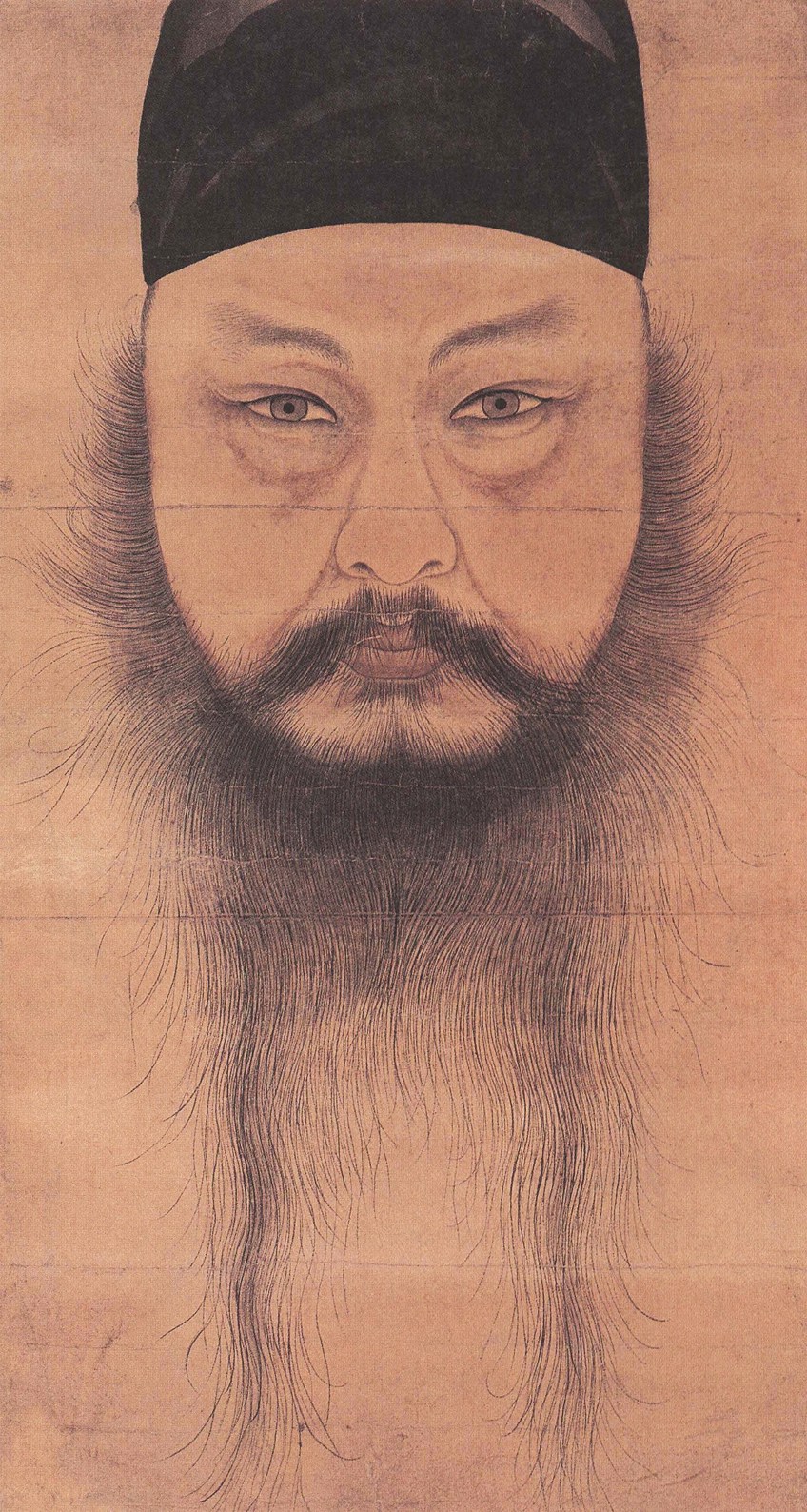
Inwang Jesaekdo by Jeong Seon (1751)
| Artist | Jeong Seon |
| Year | 1751 |
| Medium | Ink on Paper |
| Dimensions | 79 cm x 138 cm |
Inwang Jesaekdo was painted in 1751 by the famous Korean artist, Jeong Seon. Inwang Jesaekdo translates to After Rain at Mt. Inwang. It was created during the Joseon Dynasty in Chengun-Dong in the Jongno District, his birthplace. In 1984, the piece was designated the 217th National Treasure of Korea by the South Korean government. It depicts a rural Japanese landscape, with rolling mist creeping through the trees below the mountains, as the scene clears following the fall of rain. The painting is currently housed and managed by the Ho-am Art Museum in Yongin.
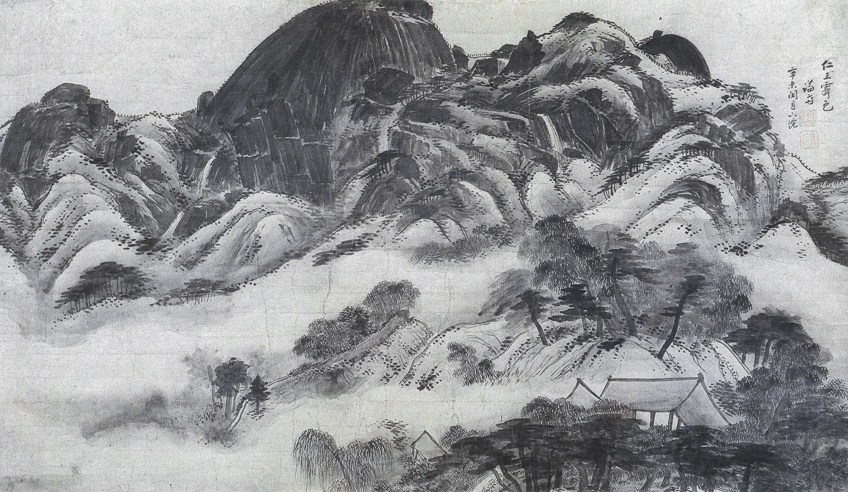
Water Drops and Calligraphy by Kim Tschang-Yeul (1995)
| Artist | Kim Tschang-Yeul |
| Year | 1995 |
| Medium | Prints and Multiples, Aquatint |
| Dimensions | 57 cm x 74.5 cm |
Kim Tschang-Yeul is a prominent figure among Korean artists at the forefront of Korean modernism in the post-war era. Born in 1929, he spent more than five decades refining and experimenting with his technique of painting water droplets. Water Drops and Calligraphy is considered a fine example of his work. Much of his work is symbolically based on his philosophical outlook on life, the droplets representing the meaning being meaningless, the transparent nature of water could both be perceived as a metaphor for the emptiness of a droplet, yet it still contains form and substance.
Interspace/Meditation by Lee Dong-Youb (2003)
| Artist | Lee Dong-Youb |
| Year | 2003 |
| Medium | Acrylic on Canvas |
| Dimensions | 160 cm x 160 cm |
Lee Dong-Youb was born in 1946. He held his first solo exhibition in 1977 at the Seoul Gallery, whose founder was also Lee’s father-in-law. He is considered by art historians to be a leading figure of the Korean abstract painting movement. Lee’s work is driven by his personal view of what the post-modernist artistic landscape should look like. The most prominent themes of his work are the cyclic nature of resonance, symbiosis of elements, and dynamic interplay of the environment and the state of the original being.
In conclusion, we have learned that Korean art can be traced back to the time of prehistoric human history, we have seen how neighboring Eastern cultures had a major influence on traditional Korean art until it found its character and style. After the Japanese colonial occupation, Modern Korean art flourished into many sub-styles that went beyond the status quo of what art represented to Koreans.
Take a look at our Korean art facts webstory here!
Frequently Asked Questions
Does North Korea Have Art or Is There Just South Korean Art?
Most if not all of the artists listed above are from South Korea. North Korea does not seem to have much art culture, with most of the paintings being military propaganda and only displaying symbols of nationalist pride.
Is Korean Traditional Art the Same as Japanese and Chinese Art?
Although the neighboring Eastern countries initially had a large influence on Korean culture, Korean art eventually grew from its own national identity, one being largely focused on the peaceful and naturalistic elements of life, and Korean art reflected that with its subtle flowing lines and natural subject matter.
Isabella studied at the University of Cape Town in South Africa and graduated with a Bachelor of Arts majoring in English Literature & Language and Psychology. Throughout her undergraduate years, she took Art History as an additional subject and absolutely loved it. Building on from her art history knowledge that began in high school, art has always been a particular area of fascination for her. From learning about artworks previously unknown to her, or sharpening her existing understanding of specific works, the ability to continue learning within this interesting sphere excites her greatly.
Her focal points of interest in art history encompass profiling specific artists and art movements, as it is these areas where she is able to really dig deep into the rich narrative of the art world. Additionally, she particularly enjoys exploring the different artistic styles of the 20th century, as well as the important impact that female artists have had on the development of art history.
Learn more about Isabella Meyer and the Art in Context Team.
Cite this Article
Isabella, Meyer, “Korean Art – Exploring Both Traditional and Modern Korean Art.” Art in Context. November 20, 2021. URL: https://artincontext.org/korean-art/
Meyer, I. (2021, 20 November). Korean Art – Exploring Both Traditional and Modern Korean Art. Art in Context. https://artincontext.org/korean-art/
Meyer, Isabella. “Korean Art – Exploring Both Traditional and Modern Korean Art.” Art in Context, November 20, 2021. https://artincontext.org/korean-art/.


